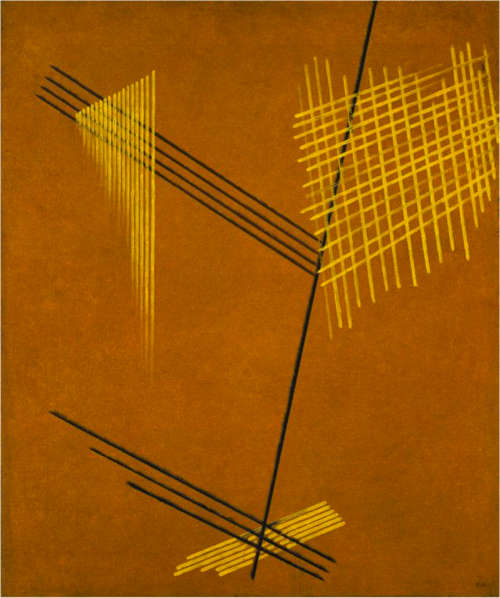Aleksandr Rodchenko, “Non-Objective Painting,” oil on canvas, 1919, Russian Constructivism

Rodchenko was known for “his distinctive style of geometric letterforms, flat color, diagonal composition" that “helped give visual voice to constructivism.” In this painting, it can be seen that he used a ruler and made a series of lines intersecting to form a sort of grid. The contrast of the yellow and black on the orange-brown are vivid enough to catch your attention (especially with the strong angles Rodchenko incorporated), but yet subtle enough to keep this work seemingly functional and geometric.
Starting from the year 1916, Rodchenko “sought to reject conventional roles of self-expression, personal handling of the medium and tasteful or aesthetic predilections.” He wanted to distance himself from the "feelings” and aesthetic beauty of art, and in turn, make it very functional and almost automated.
It was said that Rodchenko’s “early nihilism and condemnation of the concept of art make it problematic even to refer to [him] as an artist.”
—–
Armstrong, Helen. Graphic Design Theory: Readings from the Field. New York: Princeton Architectural Press, 2009. 22-24. Print.
Milner, John. "Rodchenko, Aleksandr.“ Grove Art Online. Oxford Art Online. Oxford University Press.Web. 17 Apr. 2013. <http://0-www.oxfordartonline.com.library.scad.edu/subscriber/article/grove/art/T072572>.
myeba reblogged this from arth207-spring
representingarchitecture liked this
sashastergiou liked this
insideoutbrutality liked this
arbole liked this
limboteque liked this
f924 liked this
abstractdepressionism-blog liked this
adamnewbold reblogged this from arth207-spring
arth207-spring posted this